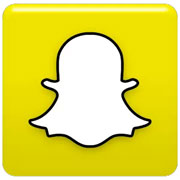
Snapchat recently began rolling out its redesigned Discover page. It now displays images and headline previews of the content inside Discover channels and Live stories on the Stories page. It previously displayed only logos for publishers or events on those sites.
Publishers now can include an image and a headline to promote each day’s story. Their stories will run beside user-contributed Live Stories on both the Discover and Stories pages.
The Discover page has a grid of tiles, similar to Pinterest. The Stories page combines the rows of static Discover channels into one scrollable row.
Snapchat users now can tap and hold to subscribe to their favorite Discover channels, instead of having to pull them up out of the entire Discover list as before. Subscribing will place unread stories below updates from users’ friends on the Stories page.
The redesign “could help with the number of hits a publisher gets, since it will put the content in the same context as Live Stories,” noted Mike Jude, a program manager at Stratecast/Frost & Sullivan.
“The subscribe feature is kind of nice too, because then if you see something on your Stories, it’s because you put it there,” he told the E-Commerce Times.
Looking for the Gold
Snapchat’s redesign may help it take on the competition — YouTube and Facebook — more effectively.
The tiled view could help draw more advertisers to Snapchat, which reportedly has hit 150 million users daily, up from 110 million in December. That’s still a far cry from Facebook’s 1.1 billion daily active users worldwide, though.
On the other hand, consumers viewed 3 billion videos on Snapchat daily last July, while Facebook chalked up about 4 billion. YouTube hit the 4-billion video view mark in 2012.
Big brands reportedly are paying millions of dollars for video ads on Live Stories or in Snapchat’s Discover network in an effort to reach young people. More than 60 percent of smartphone users aged 13 to 34 use Snapchat, the company has claimed, and advertisers are hungry for access to that demographic.
“Advertising is primarily a push dynamic, [but] Snapchat is more of a pull dynamic,” Jude remarked. “As an advertiser, you always look for the people who are clicking into your copy. You want active readers rather than passive ones.”
Content Marketing’s Rosy Future
Content marketing will be a US$300 billion industry by 2019, PQ Media has predicted.
Engagement with branded content is significantly higher on smartphones than on desktops and tablets, according to the Polar report for April 2016.
The big opportunity for publishers and advertisers “is clearly on mobile,” the Polar report points out.
Advertising Success Is Ephemeral
Snapchat “is crossing that dangerous chasm from social media site to viable business,” Jude cautioned. “Monetization is hard and demands that the basic social model change to either capture more advertising attention or more subscription revenue — and getting the balance is critical.”
Snapchat is trying to steer clear of subscriptions, he said, “but as an advertising channel, it must demonstrate that it can capture and hold people’s attention long enough for advertising to stick.”
However, Snapchat moments “are very brief and focused on a communication that lasts for … a matter of seconds,” said Larry Chiagouris, professor of marketing at Pace University.
“Snapchat and media partners will need to train an entire generation to get news from the Snapchat ecosystem,” he told The E-Commerce Times. “This is doable, but not in the near future, and could take years.”
Until Snapchat moments can be proven to impact consumer behavior, Chiagouris said, “advertisers will not jump on board beyond a little experimentation.”













































Social Media
See all Social Media